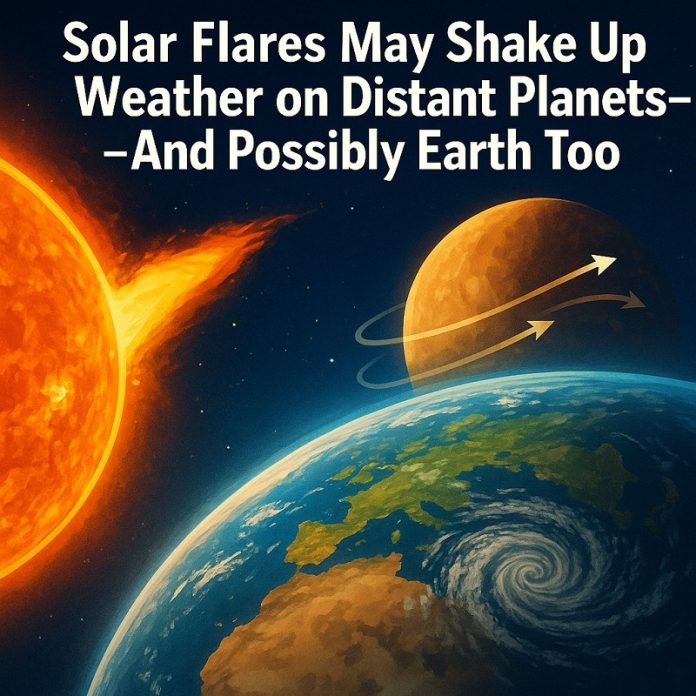
A new study has found that solar flares—sudden bursts of energy from stars—can trigger short-term weather changes on planets far beyond our solar system.
The research, published in The Astronomical Journal, offers some of the clearest evidence so far that space weather can affect a planet’s climate within just a few days.
These findings may also help scientists better understand how solar activity influences Earth’s own atmosphere.
The study was led by a global team of scientists from Hebrew University of Jerusalem, NASA, the Florida Institute of Technology, the Barcelona Supercomputing Center, and the University of Oxford.
Using advanced computer simulations, the researchers looked at how solar flares might affect the climate of Earth-like planets that orbit very close to their stars.
One such example is TRAPPIST-1e, a rocky planet that always keeps the same side facing its sun—similar to how the Moon always shows one face to Earth.
The team discovered that when a solar flare hits, it causes a dramatic chain reaction in the planet’s atmosphere.
The upper layers of the atmosphere quickly cool down due to radiative emissions from molecules like carbon dioxide and nitric oxide.
Meanwhile, the lower atmosphere gets warmer as greenhouse-like gases such as water vapor and nitrous oxide increase. On the night side of the planet, wind speeds can suddenly surge, reaching up to 140 kilometers per hour—roughly the speed of a Category 1 hurricane.
While this study focused on distant planets, the findings also raise new questions about Earth. Solar flares are known to cause issues with satellites and power grids, but this research suggests they might also have short-term effects on weather patterns.
These effects wouldn’t be strong enough to cause long-term climate change—that’s still primarily driven by human activities—but they could create brief regional changes in temperature or wind patterns, especially in areas already prone to weather swings.
Dr. Assaf Hochman of Hebrew University, one of the study’s lead authors, said the results point to an “underexplored but important” link between solar activity and climate.
The study doesn’t suggest that solar flares are a major climate driver, but rather that they should be considered in models that predict short-term atmospheric behavior.
The research also adds to what scientists know about which planets beyond our solar system might be habitable. It’s not just about distance from a star—factors like space weather, atmospheric chemistry, and how a planet reacts to solar flares also matter.
In short, the Sun—and other stars—do more than just provide warmth. They can stir up weather in unexpected ways, both on Earth and on distant worlds.



